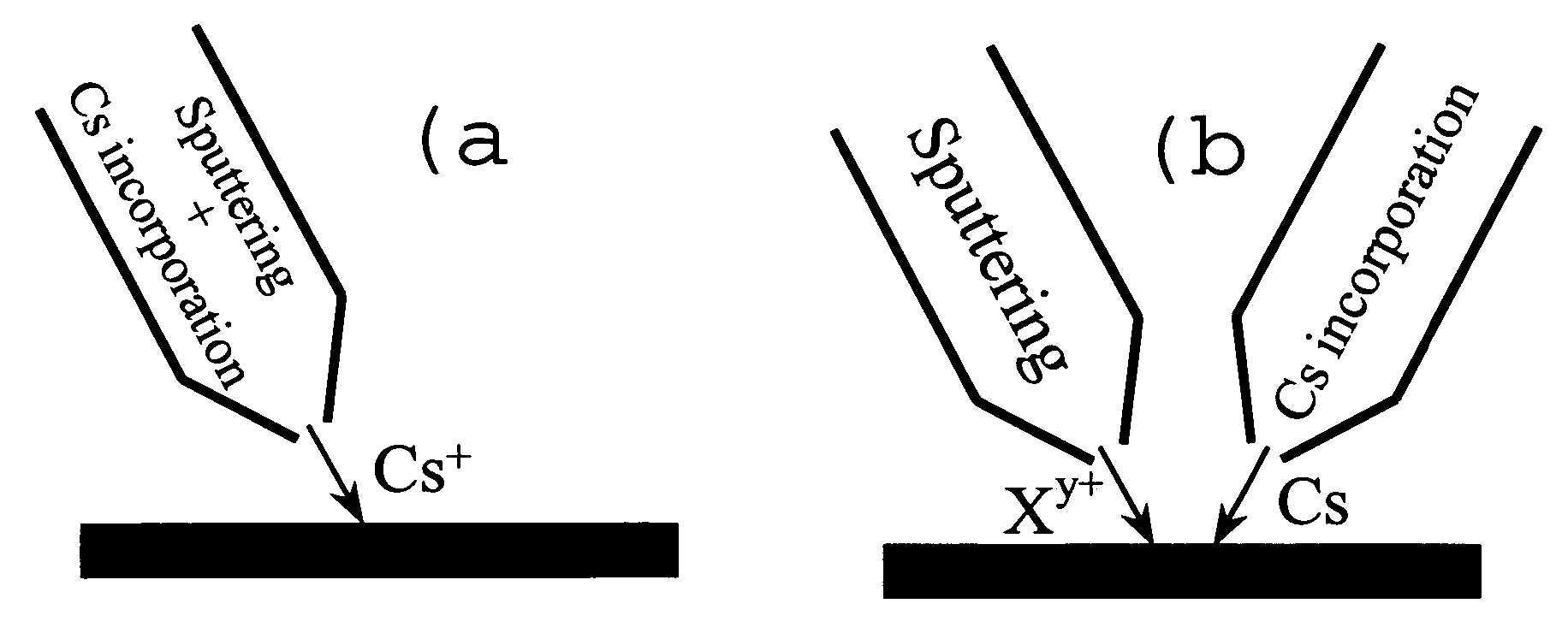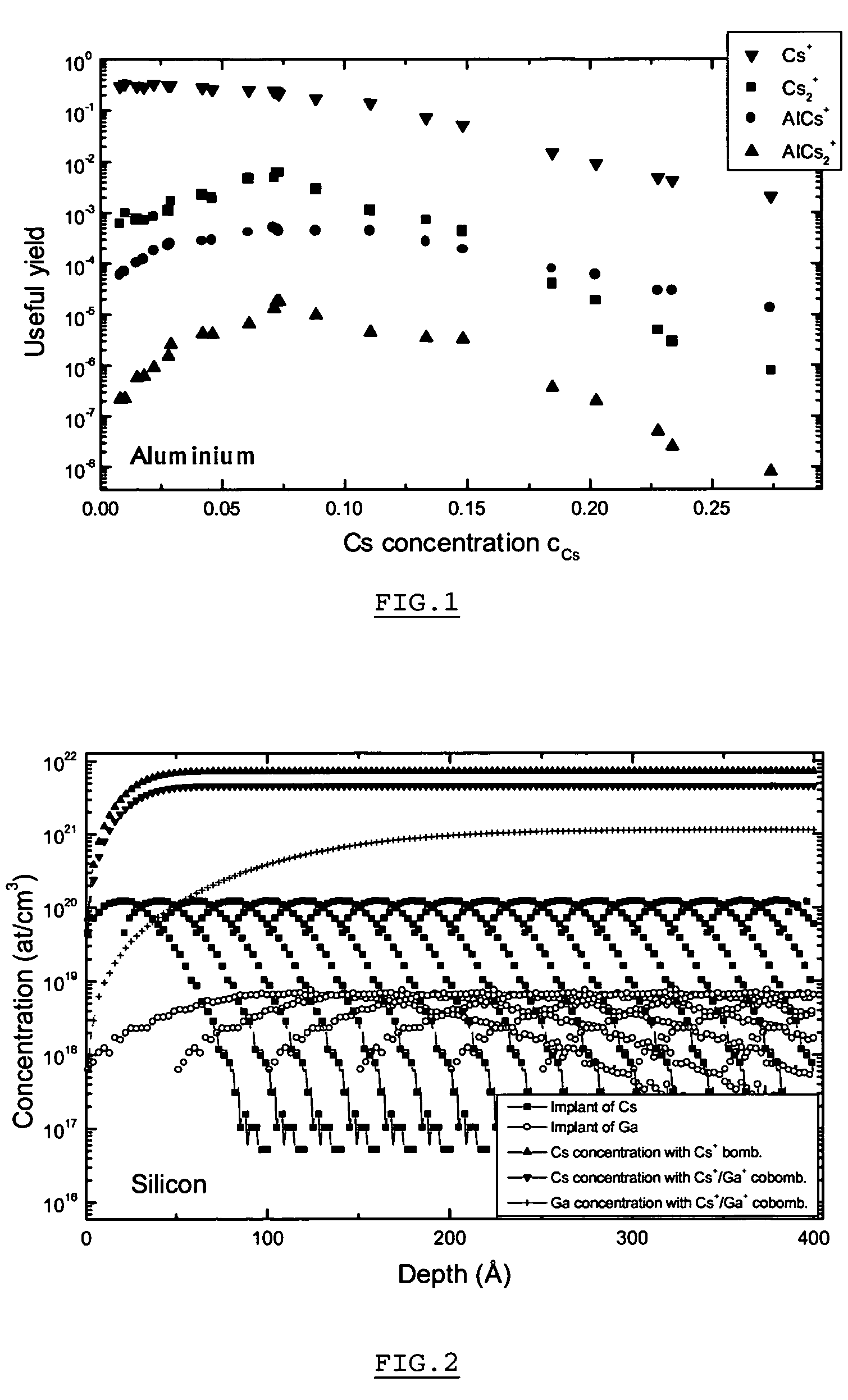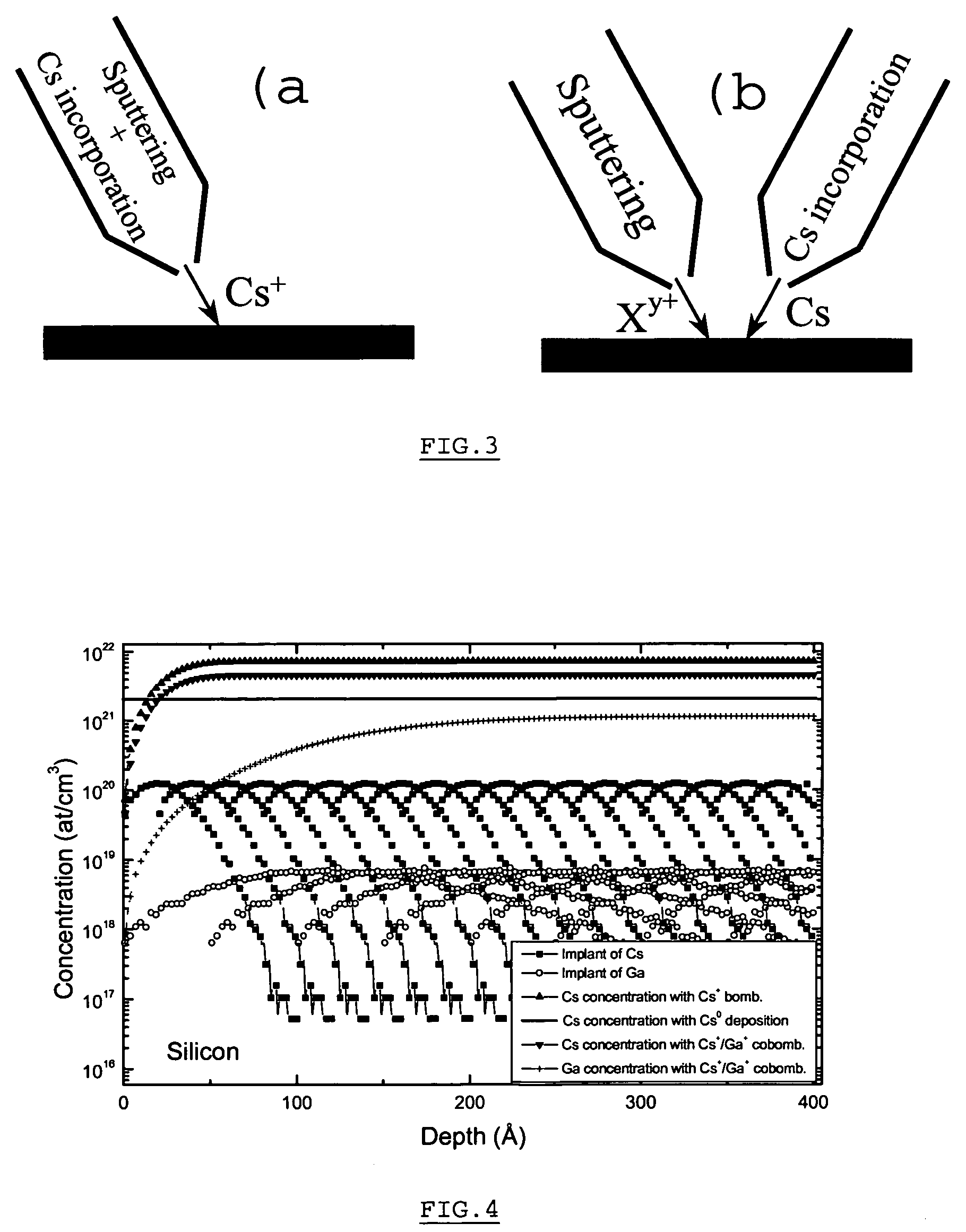Method and apparatus for in situ depositing of neutral Cs under ultra-high vacuum to analytical ends
a neutron cs and ultra-high vacuum technology, applied in the field of new secondary ion mass spectroscopy, can solve the problems of inability to optimise analysis, inability to quantify measurements with difficulty, and inability to achieve high-efficiency measurements
- Summary
- Abstract
- Description
- Claims
- Application Information
AI Technical Summary
Benefits of technology
Problems solved by technology
Method used
Image
Examples
Embodiment Construction
1. The Cs0 Evaporator
1.1. Operating Principle
[0065]To deposit alkaline metals, laboratories almost exclusively use getters, marketed by the Italian group SAES, containing the alkaline metal X in the form of chromate X2CrO4 and a ZrxAly type powder acting as a reducing agent in order to release the X (i.e. Cs) atoms. When this mixture is heated by circulating an electric current, the reduction reaction is activated and the quantity of alkaline atoms thus produced depends on the heating power. In the case of Cs, this reduction reaction is written as follows:
2 Cs2CrO4+2.5 Zr→Cr2O3+2.5 ZrO2+4 Cs
[0066]The use of such a getter on the CMS machine to carry out the optimisations cited here above nevertheless presents several major drawbacks. First of all, preliminary calculations have shown that, in standard bombardment conditions, a Cs deposition rate of approximately 1 Å / s would be appropriate. To attain such a stream of Cs atoms on the surface of the sample while at the same time choosing...
PUM
| Property | Measurement | Unit |
|---|---|---|
| temperature | aaaaa | aaaaa |
| temperature | aaaaa | aaaaa |
| length | aaaaa | aaaaa |
Abstract
Description
Claims
Application Information
 Login to View More
Login to View More - R&D
- Intellectual Property
- Life Sciences
- Materials
- Tech Scout
- Unparalleled Data Quality
- Higher Quality Content
- 60% Fewer Hallucinations
Browse by: Latest US Patents, China's latest patents, Technical Efficacy Thesaurus, Application Domain, Technology Topic, Popular Technical Reports.
© 2025 PatSnap. All rights reserved.Legal|Privacy policy|Modern Slavery Act Transparency Statement|Sitemap|About US| Contact US: help@patsnap.com



